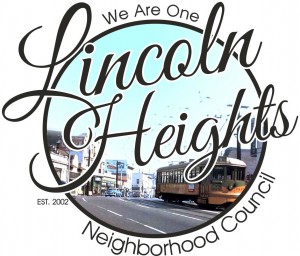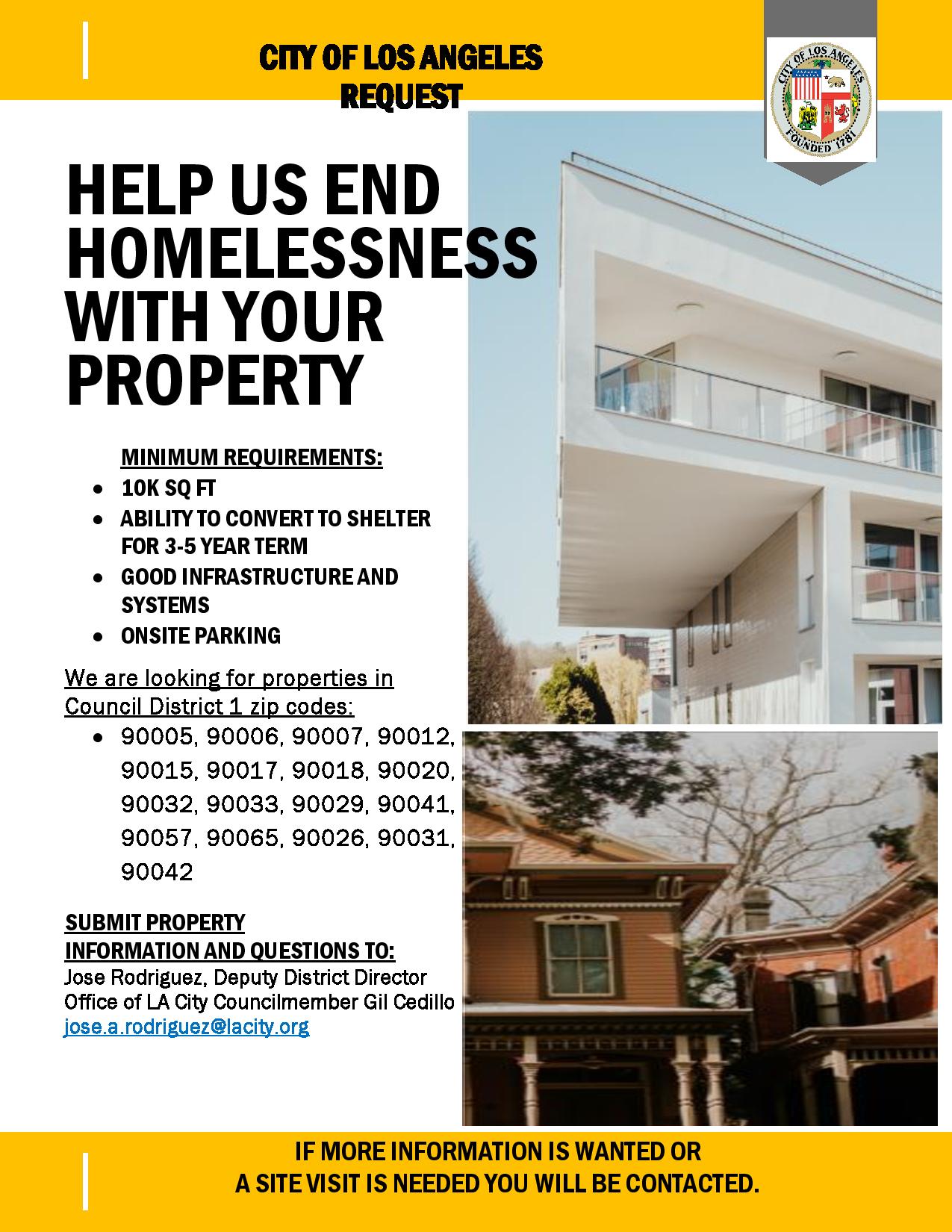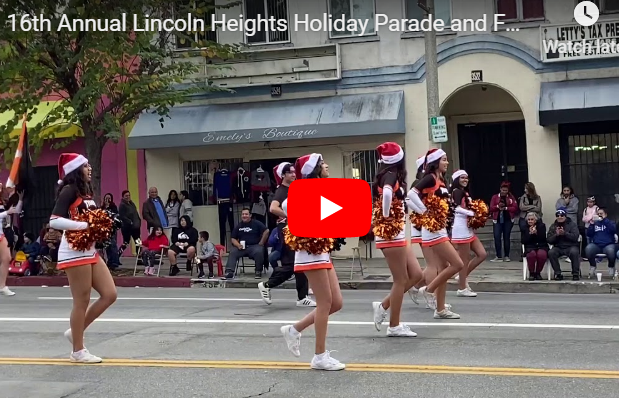FAQ
Frequently Asked Questions:
What is the purpose of the Lincoln Heights Neighborhood Council?
According to the revised City Charter adopted by voters in 1999, the purpose of neighborhood councils is to promote more citizen participation in government and make government more responsive to local needs.
The Lincoln Heights Neighborhood Council Bylaws and Standing Rules expand on its purpose:
The purpose of the Lincoln Heights Neighborhood Council is to participate as an advisory body on issues of concern to our neighborhood council and in governance of the City of Los Angeles. The mission of this council is to provide an inclusive, open forum for public discussion of issues concerning City governance, the needs of this neighborhood council, the delivery of City services to this neighborhood council and on matters of a City-wide nature. The Lincoln Heights Neighborhood Council strives to empower stakeholders from all parts of our community to work together for change.
Who is eligible to be a member of the Lincoln Heights Neighborhood Council?
Membership in the Lincoln Heights Neighborhood Council is open to all Community Stakeholders. All Stakeholders shall be eligible to vote in elections for the Board.
Who or what is a Community Stakeholder?
The City of Los Angeles has established a baseline definition of the term stakeholder as anyone who lives, works or owns property in a given community. In Lincoln Heights, Community Stakeholders shall mean any individual who lives, works or owns property in this neighborhood council. In addition, Community Stakeholders shall be identified by participation in, among other things, educational institutions, religious institutions, community organizations or not-profit organizations, block clubs, neighborhood associations, homeowners association, apartment associations, condominium associations, resident associations, school/parent groups, faith-based groups and organizations, youth groups and organizations, chamber of commerce, business improvement districts, service organizations, park advisory boards, boys and girls clubs, cultural groups, environmental groups, code-watch, neighborhood watch, police advisory board groups and/or redevelopment action boards.
How is the Lincoln Heights Neighborhood Council governed?
The Lincoln Heights Neighborhood Council Board of Directors consists of 26 members. The Executive Committee consists of a President, Vice President, Secretary, and Treasurer. Fourteen Members are elected from seven geographical Regions, two per Region. (See map for details on Regional boundaries). Two Student representative are elected. Three Community Organization Representatives and three Business Representatives also serve on the Board.of Directors. Each Board member serves a four-year term. Terms are staggered to maintain continuity.
The 26 members of the Board of Directors shall be nominated and elected at-large. Board member elections are held by the LA City Clerk on odd years. Members are elected to a four-year terms. Approximately one-half of the Board shall be elected every odd year so that terms are staggered.
High School Students aged 14 thru 18 years) that attend schools in the Lincoln Heights Neighborhood Council area or live in the Lincoln Heights Neighborhood Council area are eligible to run for the two Student Member seats on the Board of Directors. To get involved, we strongly encourage you to attend and participate in Board and Committee meetings. Volunteer Stakeholders are vital all areas. To call attention to a community problem or suggest something for our agenda please visit the Contact Us page.
In addition to approving all advisory opinions of the Lincoln Heights Neighborhood Council, the Board of Directors establishes committees as deemed necessary for the accomplishment of the Lincoln Heights Neighborhood Council’s Mission and Purposes. The real work of the Lincoln Heights Neighborhood Council, including detailed discussions and considerations of alternatives, occurs at the committee level. In Lincoln Heights, any stakeholder who attends a committee meeting (with the exception of the Executive and Election Committees) is eligible to participate in discussions and may join committees if approved by the Committee Chair and Board of Directors… .
How are neighborhood councils formed?
Communities all across Los Angeles have been allowed to decide for themselves how their individual neighborhood councils should be structured. Upon completion of a significant outreach program and drafting Bylaws, each then petitioned the Board of Neighborhood Commissioners for certification.
Lincoln Heights completed this process and was officially certified on April 27, 2002.
What does the Lincoln Heights Neighborhood Council do?
The volunteer members the Lincoln Heights Neighborhood Council endeavor to provide stakeholders with information about how to get more involved in city government. Members sometimes act as “neighborhood lobbyists” and grassroots organizers, helping the community to express its will to elected officials and have their voices heard. The Lincoln Heights Neighborhood Council also coordinates local improvement projects to make Lincoln Heights an even better place to live and work.
What are the boundaries of the LHNC?
The boundaries for the Lincoln Heights Neighborhood Council are as follows (see map for details):
Along the Los Angeles River from Cesar Chavez Avenue to the 110 Freeway. NORTH along the 110 Freeway to Avenue 39. EAST around the Heritage Square property line to Pasadena Avenue. EAST on Avenue 35 to Griffin Avenue. SOUTH along the western property line of 3372 Griffin Avenue. From the southern most point of 3372 Griffin Avenue to the terminus of Von Keithian Avenue. EAST along Von Keithian Avenue to the intersection of Von Keithian Avenue and Radio Road. From the intersection of Von Keithian Avenue and Radio Road to the peak of 1050 Montecito Drive (where KFSG-FM LA is). From the peak of 1050 Montecito Drive to the property line between 3363 North Sierra Street and 3401 North Sierra Street to the intersection of Mercury Avenue and Sierra Street. EAST on Mercury Avenue to intersection of Mercury Avenue and Reynolds Avenue. Continuing south along the property lines separating zip codes 90031 and 90032 to North Broadway. Go EAST on North Broadway to North Mission Road. NORTH on Mission Road to the southern property line of the commercial property south of the intersection of Soto Street and Mission Road. EAST along that property line to Soto Street. SOUTH on Soto Street to Marengo Street. WEST on Marengo Street to North Mission Road. SOUTH on Mission Road to Caesar Chavez Avenue. WEST on Caesar Chavez Avenue to the Los Angeles River.
To ensure that stakeholders from all parts of the above described boundary area are equally represented on the council, there shall be representatives on the Board of Governors (described in the LHNC Bylaws Article VI) from each of the following described sub-areas: (see map).
1. North on the Golden State Freeway (I-5) to the Arroyo Seco Freeway (SR-110). North on the Arroyo Seco Freeway (SR-110) to Avenue 39. West on Avenue 39 to Griffin Avenue. South on Griffin Avenue to North Broadway. West on North Broadway to the Golden State Freeway (I-5).
2. North on Griffin Avenue from North Broadway to Avenue 39. Diagonal from this corner to Sierra Street and Mercury Avenue. West on Mercury Avenue to Huntington Drive. South on Huntington Drive to Mission Road. South on Mission Road to North Broadway. West on North Broadway to Griffin Avenue.
3. North on Hancock Street from Valley Boulevard to North Broadway. East on North Broadway to Mission Road. North on Mission Road to Soto Street. South on Soto Street to Valley Boulevard. West on Valley Boulevard to Hancock Street.
4. North on the Golden State Freeway (I-5) from Mission Road to North Main Street. East on North Main Street to Valley Boulevard. East on Valley Boulevard. to Soto Street. South on Soto Street to Marengo Avenue. West on Marengo Avenue to Mission Road. South on Mission Road to the Golden State Freeway (I-5).
5. North on the Golden State Freeway (I-5) to North Broadway. East on North Broadway to Hancock Street. South on Hancock Street to North Main Street. West on North Main Street to the Golden State Freeway (I-5).
6. South on Mission Road from Daly Street to Cesar Chavez Avenue. North on Cesar Chavez Avenue to Vignes Street. North on Vignes Street to North Main Street. North on North Main Street to Daly Street.
7. North along the Los Angeles River from North Main Street to the Arroyo Seco Freeway (SR-110). North on the Arroyo Seco Freeway (SR-110) to the Golden State Freeway (I-5). South on the Golden State Freeway (I-5) to North Main Street. West on North Main Street to the Los Angeles River.
How do I join the LHNC?
If you are a stakeholder, then you’re already a member of the Lincoln Heights Neighborhood Council. If you are interested in receiving more information on Lincoln Heights Neighborhood Council activities, submit your email address here.
I’m a member of a community group in Lincoln Heights. Do I still need to become involved with the Lincoln Heights Neighborhood Council?
Yes. Neighborhood councils are a special part of city government designed to represent the community’s voice in City Hall. It is especially important that you and your group are represented in the Lincoln Heights Neighborhood Council’s advice to the city.
The Lincoln Heights Neighborhood Council works in partnership with community groups. The Lincoln Heights Neighborhood Council seeks to unify these voices and to advise the City on behalf of our more than 30,000 (2000 Census) stakeholders.
We work closely with Lincoln Heights’ City Councilmember in the 1st Council District, as well as with adjacent neighborhood councils, on regional and citywide policy issues.
Is there a City Department responsible for Neighborhood Councils?
The Department of Neighborhood Empowerment (DONE) assists neighborhoods in forming neighborhood councils by providing organizing advice, training and printing services for the distribution of flyers. Once the councils are up and running, DONE provides legal guidance and organizing advice, in addition to helping coordinate free and fair elections.
What are the Demographics for Lincoln Heights?
LINCOLN HEIGHTS DEMOGRAPHICS
Population (2000 Census): 29,129
Population Density (per square mile -Â 2000 Census): 11,318.8
Population Under Age 18 (2000 Census): 32.79%
Population Over Age 64 (2000 Census): 9.62%
Housing Units (2000 Census): 8,110
Land Area: 2.57 square miles (6.67 square kilometers)
Water Area: 0.02 square miles (0.06 square kilometers)
Translate/Traducir
Find Us On Facebook





